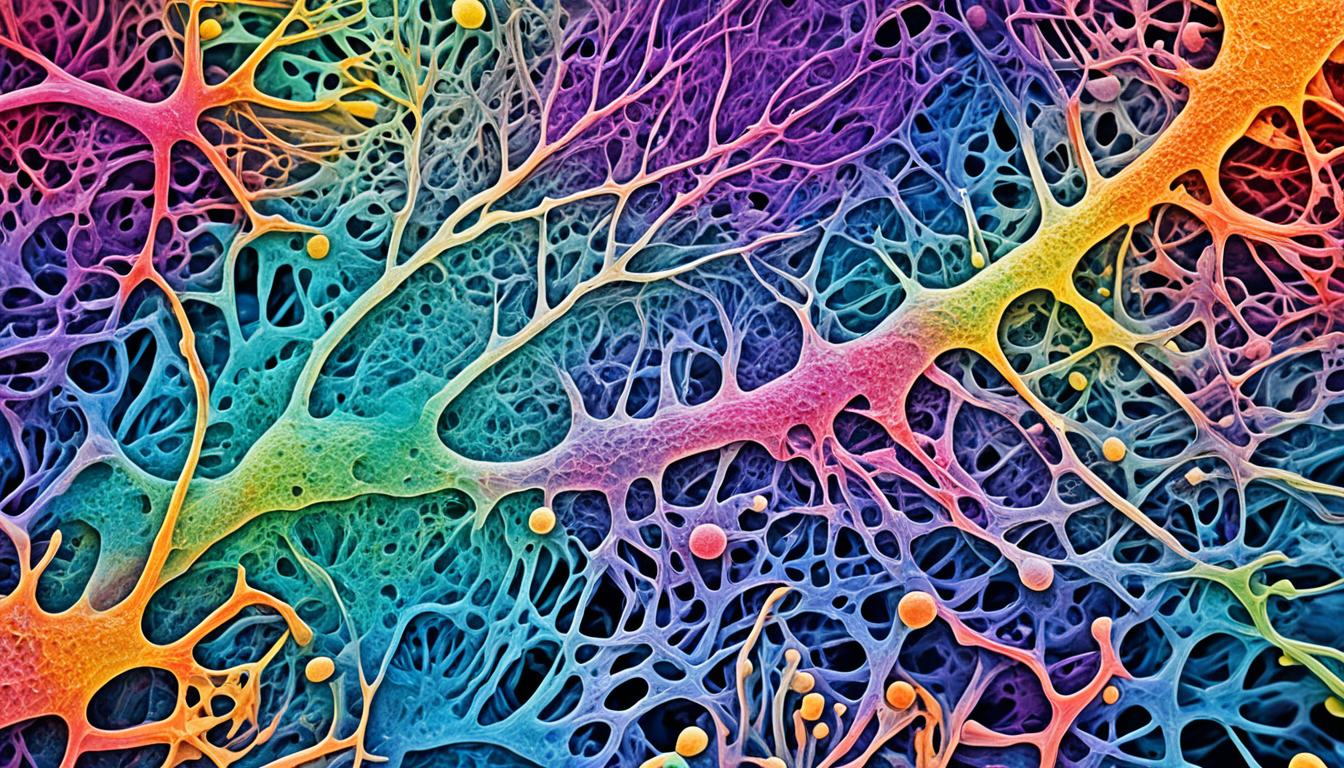Niemann-Pick disease is a rare genetic disorder. It affects how the body breaks down fats and is called a lysosomal storage disorder. It happens because the body doesn’t make enough of an enzyme called sphingomyelinase. This leads to a build-up of a type of fat called sphingomyelin in certain cells.
There are three types of Niemann-Pick disease: A, B, and C. Each type has its own signs and how they get worse over time. People with Niemann-Pick disease might have a big liver and spleen, not grow as expected, and have problems with their brain and lungs.
To diagnose Niemann-Pick disease, doctors can check a person’s DNA or test their white blood cells. Figuring out the exact type is key. It helps choose the best way to manage the disease.
Stem cell therapy, like getting a bone marrow transplant, is starting to offer hope for Niemann-Pick disease. This treatment aims to replace missing enzymes and help clear the built-up fats. It can make a real difference in life quality for those living with this condition.
Key Takeaways:
- Niemann-Pick disease is a rare genetic disorder classified as a lysosomal storage disorder.
- Deficient sphingomyelinase activity leads to the accumulation of sphingomyelin in reticuloendothelial cells.
- There are different types of Niemann-Pick disease, each with distinct symptoms and progression.
- Diagnosis involves DNA analysis and/or enzyme analysis of white blood cells.
- Stem cell therapy, including bone marrow transplantation, holds promise as a potential treatment option.
Types of Niemann-Pick Disease and Clinical Features
Niemann-Pick disease comes in three types: A, B, and C. Each has its own set of symptoms. Types A and B involve too much sphingomyelin, while type C is about too many cholesterol and lipids (Second source).
Type A shows up with very little sphingomyelinase and quickly worsening brain troubles. You might see a big liver and spleen, growth problems, and early death. In comparison, type B has more of the enzyme and a mixed bag of symptoms. These can include a swollen liver and spleen, large lymph nodes, and trouble learning. Type B usually allows people to live longer, even into adulthood (First source).
Type C usually comes with brain problems like seizures and a steady decline in brain function. Sadly, it is always deadly, and most people don’t make it past 20 (First source).
Issues with thinking and the nervous system show up in all types of Niemann-Pick disease. This includes types A, B, and C (Second source).
| Type | Cause | Clinical Features |
|---|---|---|
| Type A | Buildup of sphingomyelin | Low sphingomyelinase activity, rapid neurodegeneration, hepatosplenomegaly, failure to thrive |
| Type B | Buildup of sphingomyelin | Higher sphingomyelinase activity, variable clinical presentation, hepatosplenomegaly, lymphadenopathy, intellectual disability |
| Type C | Buildup of cholesterol and other lipids | Neurologic symptoms, seizures, progressive neurodegeneration |
Advances in Stem Cell Therapy for Niemann-Pick Disease
Stem cell therapy, like bone marrow transplantation, shows great promise for Niemann-Pick disease. This new method aims to fix missing enzymes. It hopes to boost sphingomyelinase activity and help those with this rare disease.
Enzyme replacement therapy is also being looked into. It tries to fix the real issues behind Niemann-Pick disease. These efforts focus on reducing the disease’s effects through specific treatments.
Thailand is at the forefront in using stem cell therapy for Niemann-Pick disease. It has advanced clinics and skilled doctors. This makes it a strong choice for people looking for the latest treatments for this disease.
The aim of stem cell therapy is to better the lives of those with Niemann-Pick disease. With more research, there is new hope for improving how we handle this genetic issue.

